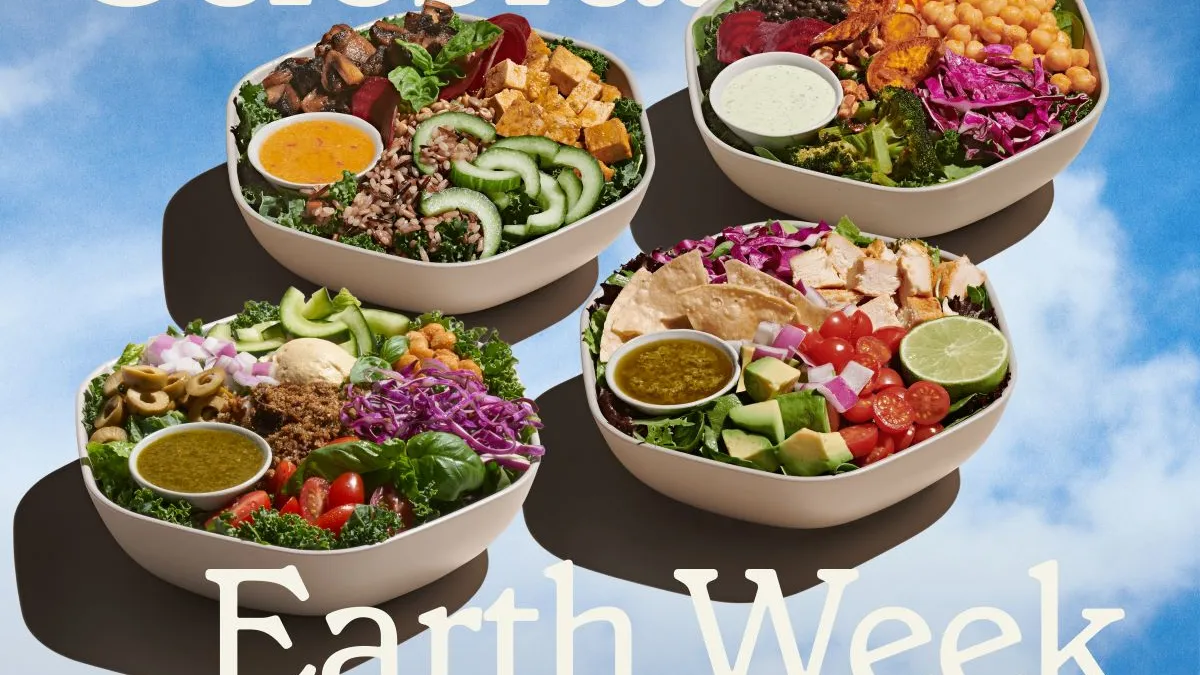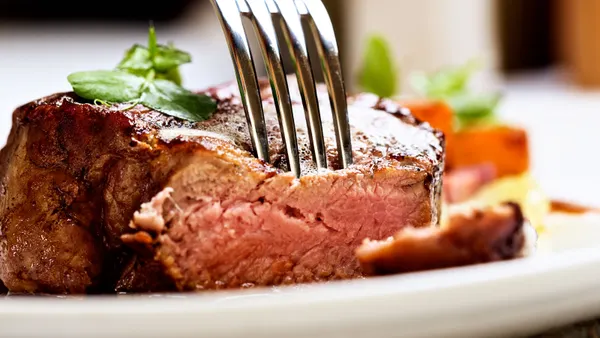Dive Brief:
- Sweetgreen launched a new item as part of its Low Carbon Collection, The Hummus Crunch Salad, the company wrote in an email to Restaurant Dive.
- Customers will be able to see which bowls have the least carbon emissions and what to order to make the smallest carbon footprint.
- Sweetgreen released its first impact report, which revealed that it’s reduced its carbon emissions by 12% from its 2019 baseline.
Dive Insight:
The Low Carbon Collection highlights some of the efforts Sweetgreen has made toward its sustainability goals. The Hummus Crunch Salad, which uses regeneratively farmed chickpeas, has 0.3 kg of carbon emissions, marking its lowest carbon meal to date, the company said in a press release. The Shroomami Bowl also uses locally sourced, non-GMO tofu sourced from small, sustainable producers. The company also calculated the emissions of all of its menu items and published the data and methodology on its website.
The fast casual chain has also focused on its supply chain, purchasing 5 million pounds of organic greens last year with 65% of suppliers using organic farming practices. The company said that 95% of its primary chicken sources are Global Animal Partnership Step 2 certified and have met five out of the six elements (stocking density, litter, lighting, enrichments, controlled atmosphere stunning and third-party auditing) of the Better Chicken Commitment, according to its impact report.
In addition to decreasing emissions intensity, the company has invested in clean energy with 100% of its operations powered by solar farms in North Carolina certified by Watershed. This has reduced its Scope 2 emissions to zero. The company also said 79% of waste was composed or recycled at restaurants that partner with Rubicon, which manages landfill, compost and recycling streams.
Several chains have been focusing on incorporating more sustainable business practices, ingredients and sourcing, including McDonald’s, Starbucks, Yum and Restaurant Brands International. Earlier this year, Wendy’s committed to a 47% reduction in carbon emissions by 2030. Chipotle rolled out an environmentally friendly store design that highlights elements like all-electric equipment and rooftop solar panels. This design is meant to cut direct and indirect greenhouse gas emissions by half by 2030 compared to 2019.
Focusing on eco-friendly menu items could also help attract more customers. Sixty-four percent of all adults said they would likely order food that was grown or raised organically or in an eco-friendly manner, according to National Restaurant Association’s State of the Restaurant Report 2023. That number jumps up to 77% for millennials and 71% for Gen Z adults. A majority of adults (72%) also said they would more likely visit a restaurant that partakes in sustainable and environmentally friendly practices, according to the NRA.










